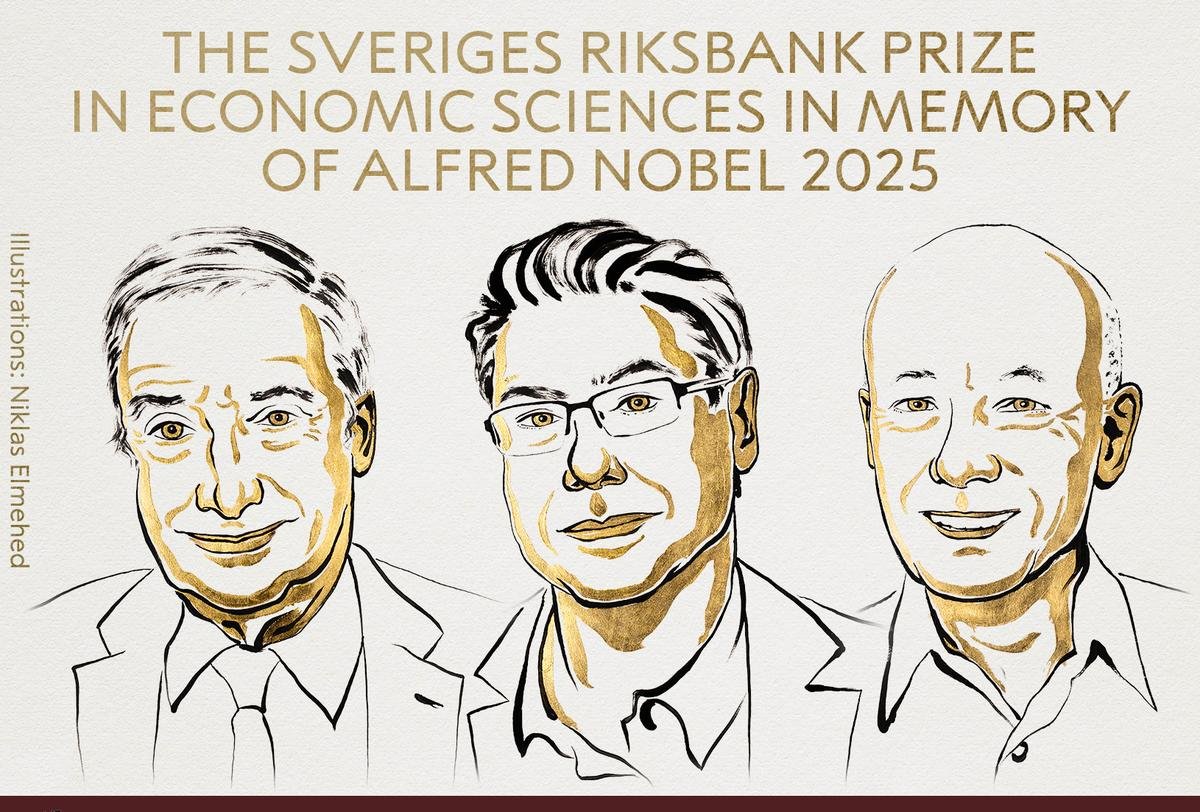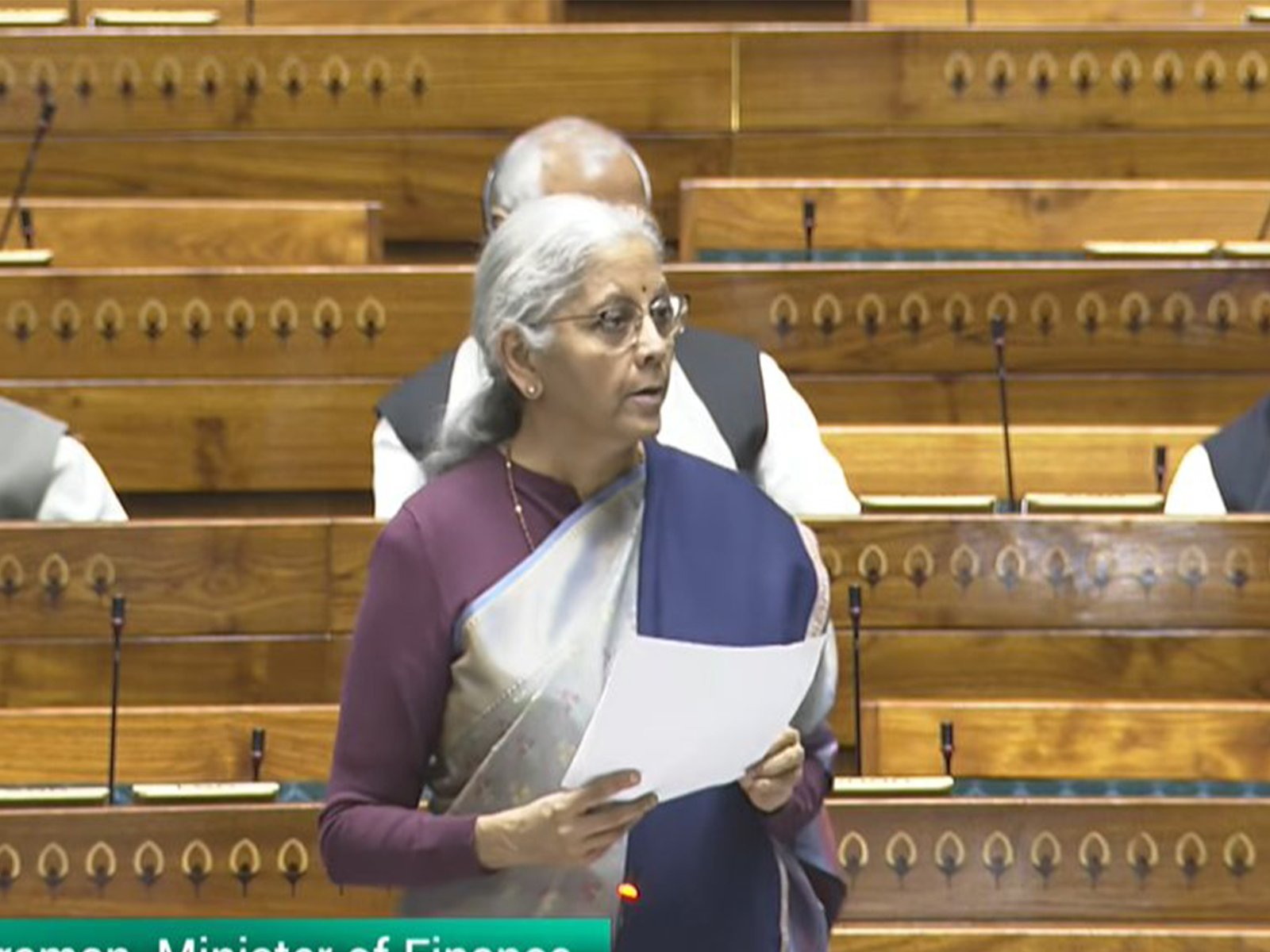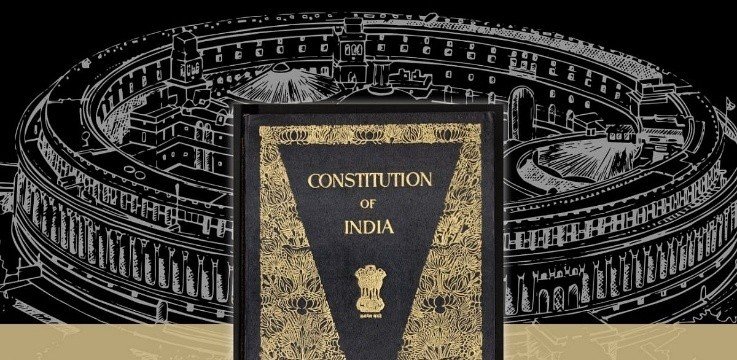Introduction
The Nobel Prize in Economics 2025 has been awarded to Joel Mokyr, Philippe Aghion, and Peter Howitt for having explained “innovation driven economic growth” and addressing why sustained growth occurred only in the last two centuries, after a long period of economic stagnation.
What is the Nobel Prize in Economics?
- Official name: Sveriges Riksbank Prize in Economic Sciences in Memory of Alfred Nobel.
- Established in 1969 by Sweden’s central bank (Sveriges Riksbank); it is not one of the original five Nobel Prizes.
- The Royal Swedish Academy of Sciences awards it annually to outstanding contributors in economics.
Joel Mokyr’s Contribution
Understanding Mokyr’s Work
- Joel Mokyr studied how the Industrial Revolution and the Enlightenment changed the way economies grew. He wanted to understand why continuous economic growth started only after the 18th century.
- Before this period, progress was slow because people had only prescriptive knowledge – they knew how to do things but not why they worked.
- During the Enlightenment, people began to value science, experiments, and evidence (propositional knowledge), which helped turn knowledge into useful inventions.
- This new mindset led to major advances like better steam engines, steel production, and mechanical tools.
- Mokyr found that societal openness to change was the real driver of sustained growth – societies that welcomed new ideas and innovations grew faster.
- However, innovation always creates winners and losers – new technologies replace older ones, often facing resistance from established interest groups.
- Mokyr argued that societies willing to accept this disruption and adapt were the ones that achieved continuous economic progress.
Prescriptive v/s Propositional Knowledge
| Type of Knowledge | Meaning | Example |
| Prescriptive Knowledge | Knowing how to do something (but not why), often through experience or tradition. | Blacksmiths knew how to make steel but not why certain techniques worked. |
| Propositional Knowledge | Knowing why something works, backed by scientific explanation and principles. | Understanding chemical reactions that improve steel quality. |
Policy Implications of Mokyr’s Research
- Invest in Skills: Governments must develop technical, practical, and commercial skills so that new ideas can be implemented.
- Example: Britain succeeded in industrialization due to skilled artisans and engineers.
- Encourage Openness to Change: Societies must tolerate short-term losses (job displacement, resistance from vested interests) to achieve long-term innovation gains.
- Knowledge Ecosystem: Sustained growth requires interaction between inventors, engineers, and entrepreneurs.
Aghion and Howitt’s Contribution
- Philippe Aghion and Peter Howitt developed a mathematical model (1992) to explain how innovation by firms drives long-term economic growth.
- They built their model around the idea of “creative destruction” (a term by Joseph Schumpeter, 1942) – where new technologies replace old ones, causing short-term disruption but leading to long-term progress.
- It is based on general equilibrium, meaning all markets (goods, labour, and finance) stay balanced as innovation continues.
- Their model showed how competition and innovation at the firm level together create overall economic stability and growth.
- Firms compete to create new, patentable technologies; patents give temporary monopoly profits as a reward for innovation, but soon other firms try to out-innovate
- This cycle of innovation and renewal keeps the economy dynamically efficient, ensuring steady growth despite constant change.
- Research and Development (R&D) is funded through household savings, linking innovation with the wider economy – more innovation raises profits and savings, which then fund more R&D.
- The model helps policymakers find the right level of R&D investment needed to maintain stable and sustainable economic growth.
| Innovation by Firms → Creative Destruction (new technology replaces old one) → Higher Productivity & Profits → More Household Savings → More Funds for R&D → Further Innovation & Technological Progress → Sustained Long-Term Economic Growth. |
Policy Implications of the Aghion-Howitt Model
- Optimal R&D Investment:
- Innovation benefits society even after firms stop earning profits, so R&D should sometimes be subsidised.
- However, if innovations are only small improvements and firms earn large monopoly profits, excessive R&D may not be necessary.
- Policy must balance social and private returns.
- Encouraging Competition: Competition drives innovation but must be managed to avoid excessive monopolies.
- Link with Financial Markets: Efficient capital markets are vital to fund innovation through savings and investment.
Commonalities Between the Models
Both Mokyr and Aghion-Howitt highlight innovation as the key driver of sustained economic growth. They show that progress creates winners and losers, so openness to change is crucial. Both emphasize the importance of knowledge, skills, and supportive policies like R&D investment and competition to maintain continuous growth.
Lessons for India
- Skilling and Human Capital: India must invest in vocational education, engineering, and digital literacy to convert ideas into innovation.
- Promote R&D: India’s R&D expenditure is below 1% of GDP – needs to rise to at least 2–3% for sustained growth.
- Foster Openness to Change: Encourage start-ups and technology adoption, even if it disrupts traditional sectors.
- Balanced Policy for Creative Destruction: Protect displaced workers through re-skilling and social safety nets.
- Innovation Ecosystem: Strengthen linkages between universities, industries, and financial markets to promote applied research.
Indian Economists in Nobel Tradition
- Amartya Sen (1998) – Welfare economics, capabilities approach.
- Abhijit Banerjee and Esther Duflo (with Michael Kremer, 2019) – Experimental approach to poverty alleviation.
- India continues to contribute through research in development economics, behavioral economics, and public policy.
Challenges and Way Forward
| Challenges | Way Forward / Solutions |
| Low R&D Spending: India invests less in research compared to global peers. | Increase R&D Funding: Encourage higher investment in research by both public and private sectors. |
| Resistance to Change: Bureaucratic inertia and fear of job losses slow innovation. | Promote Social Acceptance of Change: Build awareness about the long-term benefits of new technologies. |
| Skill Gap: Education and industrial needs are often mismatched. | Strengthen Skilling Ecosystem: Focus on applied science, technical skills, and innovation-oriented education. |
| Intellectual Property (IP) Issues: Weak IP enforcement and limited patent culture. | Ease of Doing Innovation: Simplify patenting, licensing, and regulatory procedures to encourage new ideas. |
Conclusion
The 2025 Nobel Prize shows that innovation, knowledge, and openness drive long-term economic growth. Mokyr highlights the role of historical knowledge, while Aghion and Howitt show how competition and innovation sustain growth. For India, investing in skills, R&D, and adaptability is key to a strong growth trajectory.
| Ensure IAS Mains Question Q. “Innovation is the key driver of sustained economic growth, but it inevitably creates winners and losers in society.” Critically analyze this statement in light of the contributions of Joel Mokyr and Aghion-Howitt. Discuss the implications for India’s economic policy, particularly in the context of R&D, skilling, and openness to change. (250 words) |
| Ensure IAS Prelims Question Q. Consider the following statements: 1. Prescriptive knowledge refers to knowing how to do something, while propositional knowledge refers to knowing why it works. 2. Creative destruction always harms society in the long run by replacing old industries with new ones. Which of the statements given above is/are correct? a) 1 only b) 2 only c) Both 1 and 2 d) Neither 1 nor 2 Answer: a) 1 only Explanation: Statement 1 is correct: It correctly defines prescriptive and propositional knowledge as per Joel Mokyr. Prescriptive knowledge is knowing how to do something, often by experience or tradition, while propositional knowledge is knowing why it works, based on scientific understanding. Statement 2 is incorrect: Creative destruction does not always harm society. While it disrupts old industries and displaces workers in the short term, it leads to long-term economic growth and technological progress, as explained by Aghion and Howitt. |
Also Read | |
| UPSC Foundation Course | UPSC Daily Current Affairs |
| UPSC Monthly Magazine | CSAT Foundation Course |
| Free MCQs for UPSC Prelims | UPSC Test Series |
| ENSURE IAS NOTES | Our Booklist |





